Dark Academia Look Book: Plus Size 💓



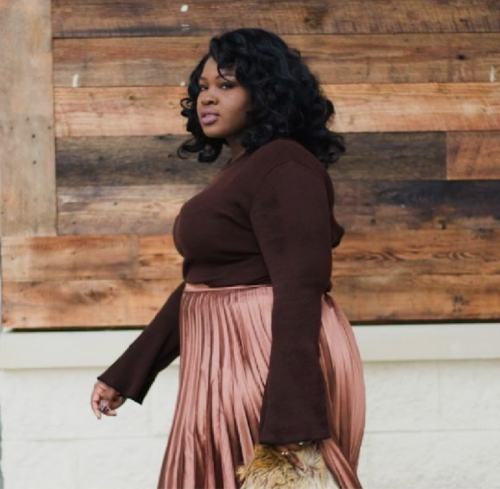





Dark academia look book: plus size 💓
More Posts from Https-lostcause and Others
Dark academia reading list ✨📚
-The Secret History by Donna Tartt
-The Lake of Dead Languages by Carol Goodman
-If We were Villains by M. L. Rio
-Ninth House by Leigh Bardugo
-The Magicians by Lev Grossman
-Metamorphoses by Ovid
-Dead Poets Society by N. H. Kleinbaum
-A Series of Unfortunate Events by Lemony Snicket
-The Hound of the Baskervilles by Arthur Conan Doyle
-Never let me go by Kazuo Ishiguro
-The Bacchae by Euripides
-The Picture of Dorian Gray by Oscar Wilde
-Memoirs of Hadrian by Marguerite Yourcenar
-Possession by A. S. Byatt
-Les Fleurs du Mal by Charles Baudelaire
Really niche things I recommend to research when bored:
Judith Butler’s queer theory
Hofstede’s national cultures
Anne Lister
Creative nonfiction and Gutkind
The queer culture of Berlin in the early to mid 1900s
Stone Butch Blues
Geoff Ryman’s novel 253
A room of one’s own by Virginia Woolf
The effect of Ibsen’s play ‘The Doll’s House’ on Chinese feminism
Feminist economics
The history of the term “Spinster”
Lesbian pulp fiction
Queerbaiting in Marketing
Saladin
Islamic cultures and their scientific discovers in the 5th-15th century
Take this isolation as an opportunity to indulge in yourself and your interest but do not force yourself to do things, I know it’s an anxiety fuelled time. Please feel free to add to the list and stay safe!
mel·io·rism
/ˈmēlyəˌrizəm/
noun the belief that the world can be made better by human effort.

“Untitled (Damayanti)”
Raja Ravi Varma | राजा रवि वर्मा (Indian, 1848–1906)
Oil on canvas



achilles and patroclus / andromache and hector / odysseus and penelope
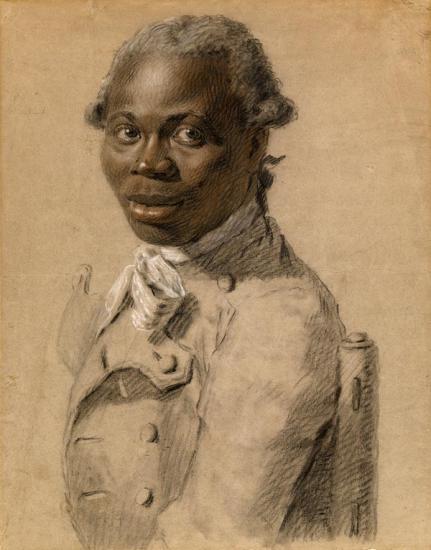
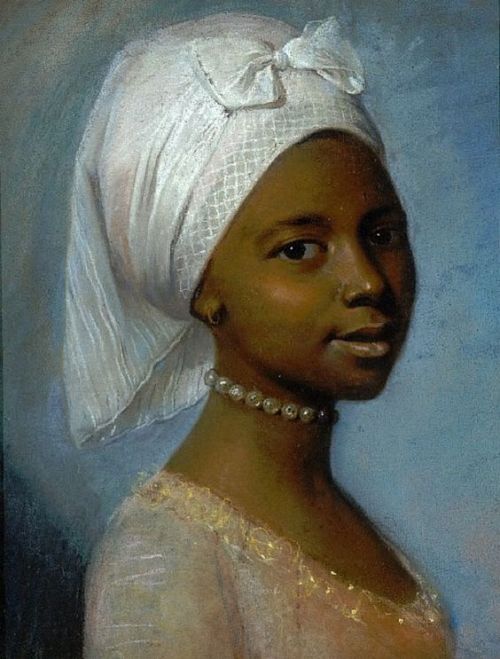
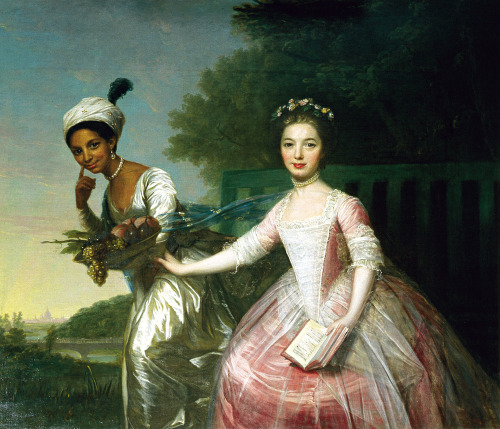
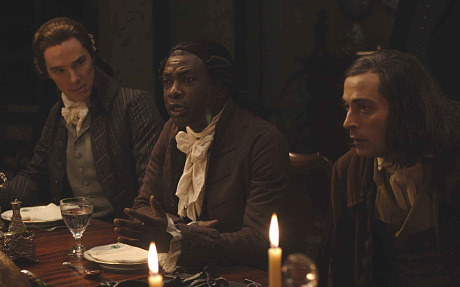
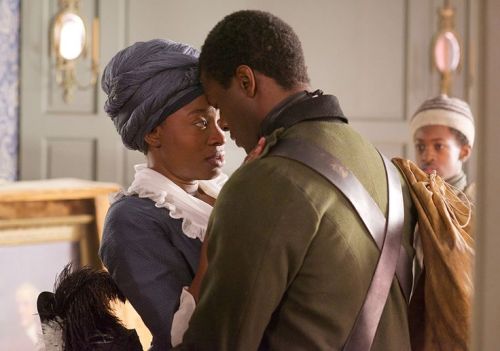
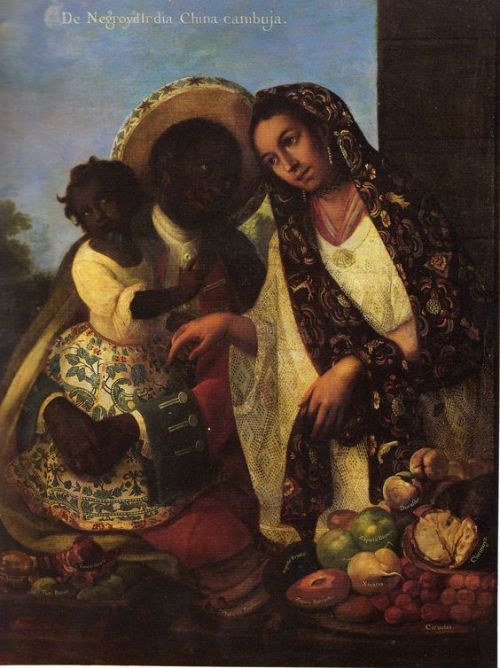



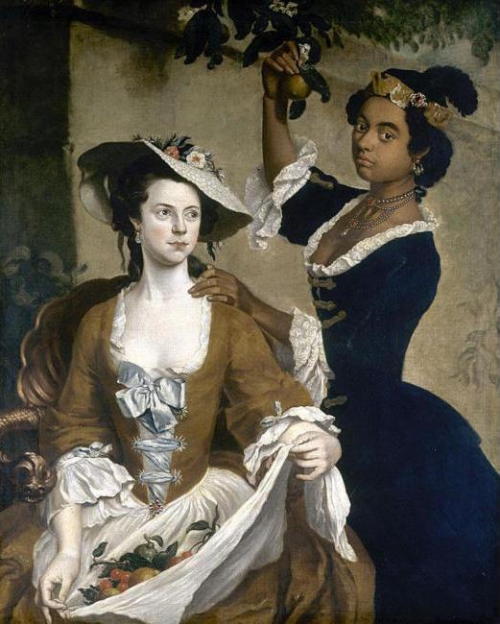

Black 18th Century
“I am America. I am the part you won’t recognize. But get used to me. Black, confident, cocky; my name, not yours; my religion, not yours; my goals, my own; get used to me.” Muhammad Ali.
I’ve been thinking about this since the death of Muhammad Ali, about the importance of black people in society through history and that even nowadays is hardly represented. And in the 18th century, even less represented.
So, let me tell you that finding this images was not easy at all. First of all, since my inspiration was Ali’s black pride, I didn’t want portraits showing black men, women or children in slavery or service position. I wanted beautiful, proud and powerful portraits. And I found them :)
Of course I also wanted some strong characters from tv and film and, you know what? IT WAS FUCKING HARD. Not because there are not many black strong characters in 18th century dramas (even though there actually are not many), BUT because there are not many images of them in the internet. Which, let me tell you Internet, THAT SUCKS.
For example, try googling “Abigail Jordan Turn”. Google it, I’ll wait here (or click the link). There are just a few images of any of both actors (Idara Victor and Aldis Hodge) and of those there are even less with just the two of them or any of them alone. There’s usually also a white character in that photo.
Of course Gugu Mbatha-Raw’s photos were easier to find, since she’s the main actress of “Belle”, it would have been ridiculous to not find photos of her. On the other hand, have you seen Amazing Grace? Do you remember the ONLY black character of this movie? Well, apparently there are only A FEW of different photos of Youssou N'Dour as Olaudah Equiano on a fast Google search.
Finally let me tell you I saw a Mexican/Spanish film this weekend called El Baile de San Juan (I’ll make a full post about that) about a pair of lovers in the last decade of the 18th century in the New Spain. There are two black characters, and one of them is this woman called María Fé (portrayed by Sylvie Henry) who is basically the link between all stories and characters, so she’s there the WHOLE movie, the story flows because of her. She’s got a son (Jacinto, portrayed by the beautiful Yotuel Romero) which is a small character. Her costume is very likely one of the most historically accurate from the movie and it’s gorgeous (from the earrings she wears, to her hair, her chintz print petticoat… everything). But you know something? The photo I posted here is the only decent one on the internet of her, no promo shots, no stills, no nothing. As if the only characters in the movie are the two (boring) main characters and the European ones.
And this is only a little example of the lack of representation nowadays of black people. But, let me let you go with this thought: this post is about black people and it was hard, if I would have looked for mestizo and mixed raze representation in the 18th century (and nowadays) I would have to stick to casta painting and a few American portraits just to get that in the media, we Latin people (and all people of colour) are pretty invisible.
But let’s better take a look at the photos from top and you all should reblog and add images of 18th century black people <3
“Portrait of a Young Woman”, 1790s, Jean-Étienne Liotard.
“Portrait of a Man”, ca. 1802, Joseph Ducreux
“Portrait of Dido Elizabeth Belle Lindsay and her cousin Lady Elizabeth Murray”, ca. 1778, Johann Zoffany
Youssou N'Dour as Olaudah Equiano in “Amazing Grace”, dir. Michael Apted, costume design by Jenny Beavan.
Idara Victor as Abigail and Aldis Hodge as Jordan in “Turn”, costume design by Donna Zakowska.
“De Negro y India; China cambuja”, 1763, Miguel Cabrera
“Portrait of a Young Black Italian Man”, 1760s, Alessandro Longhi
Sylvie Henry as María Fé and Yotuel Romero as Jacinto in “El Baile de San Juan”, dir. Francisco Athié, Costume Design by Leticia Palacios, 2010.
Gugu Mbatha-Raw as Dido Elizabeth Belle in “Belle”, dir. Amma Asante, costume design by Anushia Nieradzik, 2013.
“Portrait of Two Society Women", 1740s, Stephen Slaughter
“A Young Black (thought to be Francis Barber)”, undated, Sir Joshua Reynolds
when Christopher Poindexter said— I WILL SHED ALL OF THIS SKIN DOWN TO THE VERY BONE BENEATH IT IF THAT'S WHAT IT WILL TAKE FOR YOU TO COME TO THE REALIZATION THAT APPEARANCE IS NOT WHAT MAKES A HUMAN BEAUTIFULL.






Icons: Bokuto
like/reblog to save
able-bodied neurodivergents i want y'all to wholesale stop using physical conditions as a metaphor for neurodivergence whether it's "wouldn't it be ridiculous if this physical condition was treated like this mental condition?" (hint: it is) or not. there's no acceptable way to do this so just stop it.
Indian academia
Recently I have seen a lot of excellent posts in the dark academia tags which call out the euro-centrism of this subculture and also give great recommendations for non-white cultural academia. So I decided to put together works of Indian authors that I read growing up in India as a literature student. Please note this list leans heavily towards works centred on Bengal due to my own heritage, and is by no means comprehensive or meant to represent the entire, varied diaspora of India.
Historical/political fiction:
the lives of others by neel mukherjee: chronicling the rise and fall of a bengali family against historical events like the partition, the 1943 famines, the bengal emergency etc. diverse cast of characters retelling history through multiple povs, lyrical prose, incredible research providing an insight into naxalite bengal. talks about how it feels to be a leftist when you are born and brought up in bourgeois privilege.
the lowland by jhumpa lahiri: everything!! written by jhumpa lahiri!! should be savoured!! but this gorgeous book in particular made me UGLY CRY. to summarise without spoilers, it's a story about two brothers, separated by inches and then by miles, a story about student revolutionaries, bengal burning and boston beaches, and it's a story about a beautiful, brilliant, tormented woman who loves and loathes in equal measure.
the shadow lines by amitav ghosh:** intergenerational trauma, dhaka riots and the entwined histories of two families- one in london and the other in calcutta. sharp, bittersweet and sometimes rather scandalous. if you enjoy ggm's works try this.
a flight of pigeons by ruskin bond**: after her father is killed in the 1857 sepoy mutiny, an anglo-indian girl, her mother, and female relatives are given shelter by the muslim family of one of the chief rebels. set in north india near UP, ruskin bond's writing is powerful and explores found families and the price of imperialism and war. chef's kiss.
train to pakistan by khuswant singh: the horrors of post independence sectarian violence as recounted by a fictional village on the indo-pak border with a population largely comprising muslims and sikhs. a harrowing read but evocative and honest.
shalimar the clown by salman rushdie: allegorical story about the kashmir valley unrest, told through the insane, shakespearean revenge tragedy spun out by kashmiri tightrope walker shalimar who falls in love with boonyi, a beautiful pandit girl, a love that dooms him.
a fine balance by rohinton mistry**: four strangers' lives spill into each other as india crumbles under the 1975 emergency. this one has everything political commentary, social satire, depiction of economic hardships and a whole range of characters from diverse backgrounds. side note: it's a pretty heavy and tragic read, please be careful.
Societal stories
the guide by rk narayan: raju, an impoverished, street smart boy in a fictional south indian town takes to conning people as a tour guide but things spiral out of control when he has an affair with a married classical dancer. allegorical writing, funny and eccentric, and there's a LOT of satire about desi stereotypes: fraud religious leaders, scandalous village affairs, neocolonial mindsets and well, dancing. had a great read of this one. don't watch the film, it's inaacurate and the author himself didn't like it :(
malgudi days by rk narayan: set in the same town as the guide, a collection of short stories about the colourful lives of small town dwellers, from astrologers to doctors to postmen. it's funny and poignant in equal measure. there's not a single mediocre story in here, they're all just......charming.
interpreter of maladies by jhumpa lahiri: stories set in boston and bengal about ordinary indian people and ordinary indian lives which are just so, so MASTERFULLY written and in such crystal bright detail it feels all too real. I recommend a temporary matter, when mr pirzada came to dine, sexy, mrs sen and this blessed house.
em and the big hoom by jerry pinto**: a goan family in late 20th century mumbai + their experience when the mother is diagnosed with bpd. I haven't read this book but it was highly recommended by my friends + authors who are greatly esteemed by me
any and every work by ruskin bond because my man literally GREW up around ayahs and tonga drivers and lonely gardeners and sad kite-makers and friends in small places. I recommend road to the bazaar: a collection of short stories about north indian children involving tigers in train tunnels, beetle races, rooftop gardens and the feeling of being home again.
the white tiger by aravind adiga**: epistolary novel that deals mostly with the class struggle in india as told by a village boy, who travels to delhi for work and his slow rise to success through monumental obstacles. a good read to look into the lives and the plight of underprivileged workers and the persisting class disparity in globalised india.
city of djinns by william dalrymple: travelogue/memoir/anecdotes of the author's time in delhi as he researches for the detritus of history in the country capital. non fiction but every bit as riveting as a well spun story.
Retellings/Biographies
rajkahini (transl: stories of kings) by abanindranath tagore: stories about the rajput rulers of western india and their glorious, semi-mythological histories of battles and heartbreaks and visions. the author was often termed a lyrical artist because his descriptive prose is so good it feels like a painting put into words.
empress: the astonishing reign of nur jahan by ruby lal: a feminist biography of my favourite figure from history, nur jahan, and her deliciously satisfying ascent as the sole female sovereign in the line of the great mughals. but wow, what a woman.
the palace of illusions by chitra banerjee divakaruni: retelling of the great epic mahabharata but from draupadi's point of view. poetic and magical, and her descriptions of female rage and the unfairness of society even in mythical canon is SUPERB.
Poetry!
sarojini naidu: patriotism, society, feminism, romance
nissim ezekiel: postcolonial, satire
ak ramanujan: society, classical retellings, folktale inspired poetry
agha shahid ali: socio-political, ghazal inspired poetry
tishani doshi: feminist, contemporary
eunice d'souza: contemporary, gender politics
Pure self indulgent recs
hayavadana by girish karnad: a ridiculous, criminally hilarious play-within-a-play about a love triangle and accidental body/torso swaps and a goddess who couldn't care less and a man with a horse head. yeah.
devdas by sarat chandra chattopadhyay: pls stop shoving the movie down my throat it's the cringiest depiction of bengali culture ever but yeah the novel is 💗💗 and it's about childhood sweethearts dev and paro, the cost of obsessions and lusts and an enigmatic courtesan chandramukhi who keeps loving the wrong things.
any and every work by rabindranath tagore should be considered academia but in particular his short stories, like the kabuliwalah and the postmaster.
the byomkesh bakshi series by sharadindu bandyopadhyay: written in the vein of poirot but in colonial bengal, follows one (1) sleuthy boy and his sidekick as they unravel psychological crimes and murder mysteries. some stories are just genuinely scary and all have eclectic casts. sharadindu said homoerotic/feral women/immoral genius people rights!
Like I said this list is not comprehensive!!! But I tried my best!!! I think we should really try to decolonize our reading tastes. And yes I purposely left out Arundhati Roy (because she is literally the only Indian author ever recommended in lists) Vikram Seth (because I do not like him) and Roshani Chokshi (because any one of the above)
I hope you guys get some good picks from this list :)
[** has heavy trigger warnings]
-
 dressingupthemoon reblogged this · 7 months ago
dressingupthemoon reblogged this · 7 months ago -
 holdingart reblogged this · 9 months ago
holdingart reblogged this · 9 months ago -
 academiearts reblogged this · 1 year ago
academiearts reblogged this · 1 year ago -
 thetrashwitxh liked this · 1 year ago
thetrashwitxh liked this · 1 year ago -
 magdaleneruths reblogged this · 1 year ago
magdaleneruths reblogged this · 1 year ago -
 sherlockig liked this · 1 year ago
sherlockig liked this · 1 year ago -
 trptyxh reblogged this · 1 year ago
trptyxh reblogged this · 1 year ago -
 little-oysters reblogged this · 1 year ago
little-oysters reblogged this · 1 year ago -
 temnet liked this · 1 year ago
temnet liked this · 1 year ago -
 reovera-singlehorns liked this · 1 year ago
reovera-singlehorns liked this · 1 year ago -
 ireshiginami liked this · 1 year ago
ireshiginami liked this · 1 year ago -
 ellanessa liked this · 1 year ago
ellanessa liked this · 1 year ago -
 darlingbookworm reblogged this · 1 year ago
darlingbookworm reblogged this · 1 year ago -
 catherinebronte reblogged this · 1 year ago
catherinebronte reblogged this · 1 year ago -
 chandajaan liked this · 1 year ago
chandajaan liked this · 1 year ago -
 inlovewithjimhopper liked this · 2 years ago
inlovewithjimhopper liked this · 2 years ago -
 pcrfumebcttles reblogged this · 2 years ago
pcrfumebcttles reblogged this · 2 years ago -
 lyanro reblogged this · 2 years ago
lyanro reblogged this · 2 years ago -
 lyanro liked this · 2 years ago
lyanro liked this · 2 years ago -
 thepeaceofwildthings reblogged this · 2 years ago
thepeaceofwildthings reblogged this · 2 years ago -
 kabir1789 liked this · 2 years ago
kabir1789 liked this · 2 years ago -
 the-night-dreams-of-you liked this · 2 years ago
the-night-dreams-of-you liked this · 2 years ago -
 darkartcademia reblogged this · 2 years ago
darkartcademia reblogged this · 2 years ago -
 past-land reblogged this · 2 years ago
past-land reblogged this · 2 years ago -
 younggirlsgettheirs liked this · 2 years ago
younggirlsgettheirs liked this · 2 years ago -
 starpaintedskinmuse reblogged this · 2 years ago
starpaintedskinmuse reblogged this · 2 years ago -
 faeriewifey reblogged this · 2 years ago
faeriewifey reblogged this · 2 years ago -
 aaalvcard liked this · 2 years ago
aaalvcard liked this · 2 years ago -
 differentducktectivewasteland liked this · 2 years ago
differentducktectivewasteland liked this · 2 years ago -
 drogonfires liked this · 2 years ago
drogonfires liked this · 2 years ago -
 steampunk-llama liked this · 2 years ago
steampunk-llama liked this · 2 years ago -
 mercuryana reblogged this · 2 years ago
mercuryana reblogged this · 2 years ago
